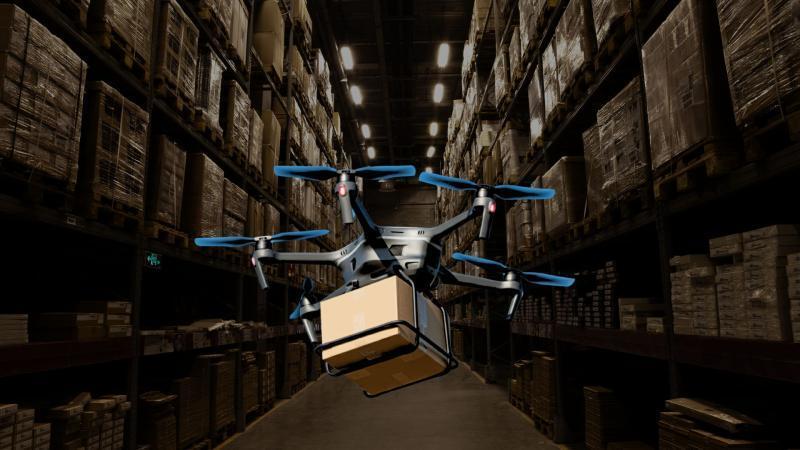
New Tech Optimises Drone Fleets for Faster, Greener Deliveries
Imagine a future where your packages arrive at your doorstep faster, with a significantly smaller environmental footprint. Sounds like a utopian dream, doesn’t it? However, thanks to recent breakthroughs in drone technology and logistics, we’re one step closer to making this a reality. Researchers have developed a novel algorithm to tackle the “Drone Warehouse Problem,” a crucial challenge in the quest for scalable, sustainable last-mile delivery solutions.
The Drone Warehouse Problem refers to the complexity of managing multiple drone fleets from a single warehouse, ensuring that packages are delivered efficiently and effectively. This challenge arises from the fact that each drone has its unique flight characteristics, battery life, and weather conditions, making it difficult to optimize their schedules. The problem is further exacerbated by the need to balance the number of drones in the air at any given time, to avoid congestion and ensure timely delivery.
To address this issue, a team of researchers from the Indian Institute of Technology (IIT) has developed an innovative algorithm that optimizes drone delivery schedules. The algorithm, known as the “Drone Task Assignment (DTA) algorithm,” uses a combination of machine learning and graph theory to assign tasks to drones and optimize their routes.
Here’s how it works: the DTA algorithm takes into account various factors such as the location of the warehouse, the destination of the packages, the weather conditions, and the capabilities of each drone. It then assigns tasks to drones in a way that minimizes the total distance traveled, reduces the number of drones in the air, and ensures that packages are delivered within a specific time frame.
The algorithm has been tested in simulations and has shown promising results. According to the researchers, the DTA algorithm can reduce the total distance traveled by drones by up to 30%, resulting in significant cost savings and a reduced carbon footprint. Additionally, the algorithm can increase the overall efficiency of the drone fleet by up to 25%, allowing for faster delivery times and improved customer satisfaction.
The implications of this technology are far-reaching. With the DTA algorithm, logistics companies can efficiently manage their drone fleets, reducing the complexity and cost of last-mile delivery. This, in turn, can help to reduce the environmental impact of delivery services, making them more sustainable for the future.
The development of the DTA algorithm is a significant breakthrough in the field of drone logistics. As the demand for fast and efficient delivery services continues to grow, companies will need to find innovative solutions to manage their drone fleets. The DTA algorithm provides a practical and scalable solution to this challenge, paving the way for widespread adoption of drone technology in the logistics industry.
In conclusion, the development of the DTA algorithm is a significant step forward in the quest for faster, greener deliveries. By optimizing drone delivery schedules, logistics companies can reduce costs, increase efficiency, and minimize their environmental impact. As the technology continues to evolve, we can expect to see widespread adoption of drone technology in the logistics industry, revolutionizing the way we think about last-mile delivery.
Source: https://researchmatters.in/news/novel-algorithm-tackles-drone-warehouse-problem-faster-deliveries






